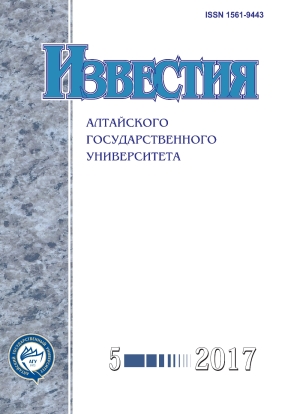The Administrative Status of Leaders of the Upper Irtysh Fortresses in the First Half of the 18th Century
Abstract
The publication reflects the results of research dedicated to the work of lower strata of Russian fortress administration system of the Upper Irtish area in the first half of the 18th century. The author proceeds from the proposition of two original constructing local tiers models of administrative hierarchy in the Upper Ob-Irtysh area. Based on the administrative discourse of the relevant period, the definition “Upper Irtysh Fortresses” is introduced in scientific circulation and widely used in the text. Involvement of unpublished documents from central archives allowed identifying the Irtysh fortresses’ garrison’s leaders as key administrative units in the local area; the author considers their institutionalization factors and reconstructs their competence. Defensive, diplomatic and customs functions are singled out and considered . In conclusion, it is emphasized that certain degradation of the architecture of managers’ functional status in the Irtysh fortresses did not reduce the administrational effectiveness, but in many respects corresponded to the realities of territory developmental and the state of the resources basis.
DOI 10.14258/izvasu(2017)5-02
Downloads
Metrics
References
Бородаев В.Б., Контев А.В. Формирование российской границы в Иртышско-Енисейском междуречье в 1620-1720-х гг. : документальная монография. — Барнаул, 2015.
Моисеев В.А. Россия и Джунгарское ханство в XVIII в. — Барнаул, 1998.
Акишин М.О. Российский абсолютизм и управление Сибири XVIII в.: структура и состав государственного аппарата. — М. ; Новосибирск, 2003.
Муратова С.Р. Сибирские укрепленные линии
XVIII в. : дис. ... канд. ист. наук. — Уфа, 2007.
Ананьев Д.А. К вопросу о компетенции комендантов пограничных крепостей Южной Сибири в первой половине XVIII в. // Социально-экономические и этнокультурные процессы в Верхнем Прииртышье в XVII — XX вв.: материалы Международ. науч. конф. — Новосибирск, 2011.
Российский государственный архив древних актов (РГАДА). — Ф. 24 (Разряд XXIV. Сибирский приказ и управление Сибирью). — Оп. 1. — Д. 25.
Зуев А.С. Штатная реформа сибирского казачества 1737 г. // Вестник Новосибирского государственного университета. Серия: История, филология. — 2007. — Т. 6, вып. 1.
РГАДА. — Ф. 248 (Сенат и его учреждения). — Оп. 13. — Кн. 690. — Д. 57.
Российский государственный военно-исторический архив (РГВИА). — Ф. 20 (Воинская экспедиция Военной коллегии). — Оп. 1/47. — Д. 108.
РГВИА. — Ф. 20. — Оп. 1/47. — Д. 117.
РГВИА. — Ф. 20. — Оп. 1/47. — Д. 45.
РГВИА. — Ф. 20. — Оп. 1/47. — Д. 318.
Международные отношения в Центральной Азии. XVII — XVIII вв. : документы и материалы. — М., 1989. — Кн. 1.
РГАДА. — Ф. 214 (Сибирский приказ). — Оп. 2. — Д. 96.
РГАДА. — Ф. 415 (Сибирская губернская канцелярия). — Оп. 1. — Д. 13.
РГАДА. — Ф. 248. — Оп. 6. — Кн. 334. — Д. 18.
Copyright (c) 2017 Д.С. Бобров

This work is licensed under a Creative Commons Attribution 4.0 International License.
Izvestiya of Altai State University is a golden publisher, as we allow self-archiving, but most importantly we are fully transparent about your rights.
Authors may present and discuss their findings ahead of publication: at biological or scientific conferences, on preprint servers, in public databases, and in blogs, wikis, tweets, and other informal communication channels.
Izvestiya of Altai State University allows authors to deposit manuscripts (currently under review or those for intended submission to Izvestiya of Altai State University) in non-commercial, pre-print servers such as ArXiv.
Authors who publish with this journal agree to the following terms:
- Authors retain copyright and grant the journal right of first publication with the work simultaneously licensed under a Creative Commons Attribution License (CC BY 4.0) that allows others to share the work with an acknowledgement of the work's authorship and initial publication in this journal.
- Authors are able to enter into separate, additional contractual arrangements for the non-exclusive distribution of the journal's published version of the work (e.g., post it to an institutional repository or publish it in a book), with an acknowledgement of its initial publication in this journal.
- Authors are permitted and encouraged to post their work online (e.g., in institutional repositories or on their website) prior to and during the submission process, as it can lead to productive exchanges, as well as earlier and greater citation of published work (See The Effect of Open Access).








